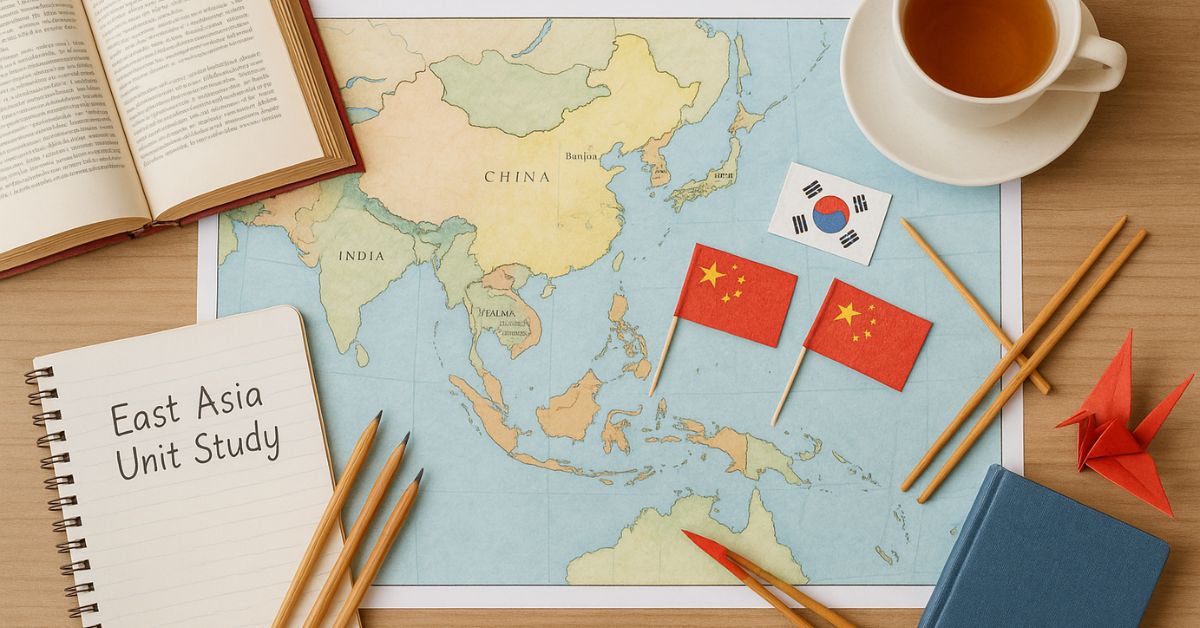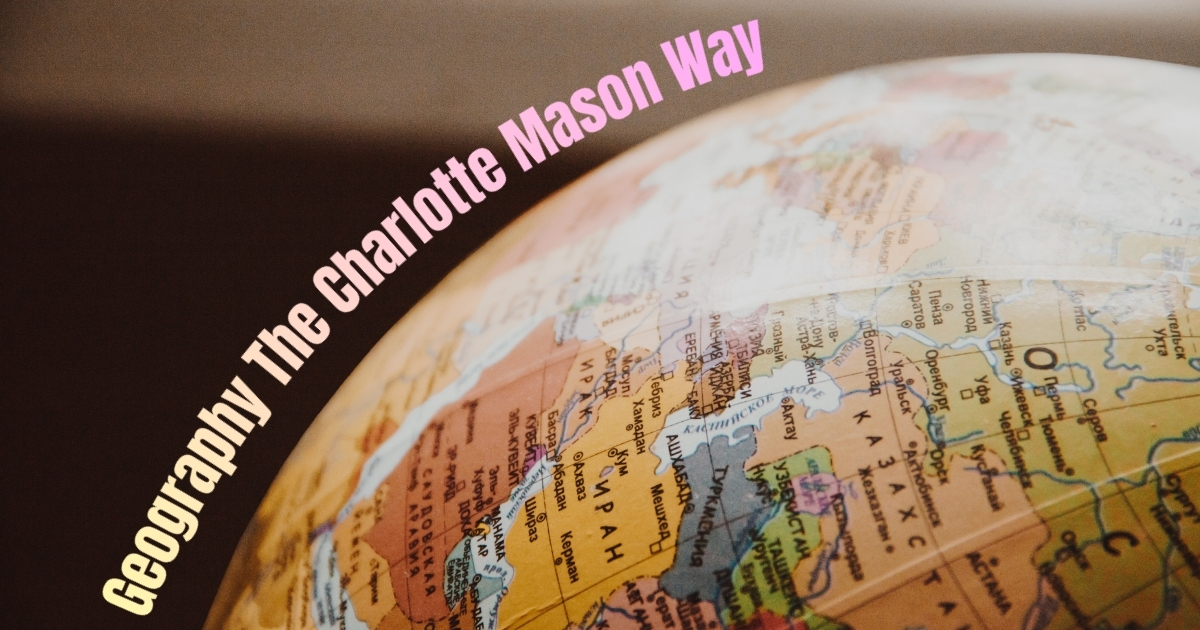Ready to shake up your homeschool routine? Sometimes, breaking away from the standard curriculum is the best way to spark curiosity and bring learning to life. If you’re looking for a fresh, engaging, and deeply educational experience for the whole family, we have some fantastic East Asia unit study ideas for you. This theme offers a vibrant journey through history, culture, art, and literature that can be adapted for learners of all ages, from your youngest kids to your high schoolers needing to log credit hours.
A unit study is a wonderful way to practice integrated learning. Instead of teaching subjects like history, art, and literature in separate blocks, you weave them all together around a central theme. This approach helps children see the connections between different fields of knowledge, making the lessons more meaningful and memorable.
An East Asian theme is particularly rich, covering the diverse and fascinating cultures of countries like China, Japan, and South Korea. Let’s dive into how you can build an unforgettable homeschool lesson on East Asia.
Goals for Your East Asian Unit Study
Before you start gathering materials, it’s helpful to set some goals. What do you want your children to take away from this experience? A well-planned unit study can do more than just fill a few weeks on your calendar; it can broaden horizons and build a foundation for lifelong learning.
The main objective is to give your family a dynamic overview of the geography, culture, and literature of East Asia. This isn’t about memorizing dates and facts, but about fostering a genuine appreciation for different ways of life.
Your goals might include:
- Building Awareness: Introduce your kids to the history and cultural significance of China, Japan, and South Korea.
- Deepening Understanding: Help them grow in their knowledge of the unique histories that have shaped each nation.
- Enriching Your Curriculum: Add color and interest to your regular homeschool schedule, especially for social studies.
- Creating Credit Opportunities: For high schoolers, this unit study can be a fantastic way to earn elective credits or level up a World History course by logging hours for reading, projects, and research.

Gathering Your Resources
You don’t need to buy a whole new curriculum to make this happen. With a mix of library books, online resources, and a few key study guides, you can create a comprehensive unit study. A great starting point is a resource bundle like “Young Nomads: East Asia” from Learn in Color, which provides activities and book lists for various age groups. For older students, consider adding literature study guides for specific novels and poetry collections.
For high school students, you might supplement with more rigorous materials. For example, reading a classic novel set in the region, like Pearl S. Buck’s The Good Earth, and using a corresponding literature study guide can provide a deep literary analysis. Likewise, a world poetry guide can introduce them to specific forms like Korean Sijo or Japanese Haiku. The key is to find resources that work for your family’s unique learning style and can be adapted for multiple ages.
Structuring Your Unit Study
The beauty of a unit study is its flexibility. You can make it as short as one week or extend it over a month, depending on your family’s interest and schedule. For a multi-age homeschool, you can structure activities so everyone can participate together, with supplemental, age-appropriate assignments for older students.
Here’s a possible structure focusing on one country per week:
Week 1: Exploring China
For the whole family:
- Geography and Culture: Start by locating China on a map. Read an introductory article about its geography, major landmarks like the Great Wall, and cultural basics.
- Read-Alouds: Choose a family-friendly book set in China. Picture books about Chinese folktales or legends are great for younger kids.
- Hands-On Activities: Get creative! Try Chinese calligraphy with ink and brushes, make paper lanterns, or learn a few basic Mandarin phrases.
- Cooking: Make a simple dish together, like fried rice or dumplings. Cooking is a delicious way to experience culture.
For high schoolers:
- Literature: Begin reading The Good Earth and work through a study guide, focusing on themes of family, land, and cultural change.
- Writing: Assign a daily journal prompt. For instance: “What are the biggest differences you see between historic Chinese culture and modern American culture?” or “Research a Chinese dynasty and write a short report on its major accomplishments.”
- History: Watch a documentary about a specific period in Chinese history, such as the rise of the Qin Dynasty or the building of the Forbidden City.
Week 2: Journey to Japan
Japan’s rich history of samurai, intricate art forms, and modern innovations provides a wealth of material for your unit study. This week can focus on the beautiful balance between ancient tradition and futuristic technology that defines Japanese culture.
For the whole family:
- Geography and Culture: Find Japan on the map and discuss its unique geography as an archipelago. Talk about iconic symbols like Mount Fuji, cherry blossoms, and Shinto shrines.
- Read-Alouds: Select a book with a Japanese theme. Stories about samurai or folktales featuring spirits (yokai) are often captivating for all ages.
- Hands-On Activities: This is the perfect week for art projects. Try origami (the art of paper folding), practice drawing in a manga style, or create your own Zen garden in a small tray with sand and rocks.
- Movies: Watch an animated film from Studio Ghibli, like My Neighbor Totoro or Spirited Away, which are filled with Japanese culture and mythology.
For high schoolers:
- Literature: Read a book like Hiroshima by John Hersey or a classic Japanese novel.
- Writing: Focus on Japanese poetry. Use a world poetry guide to learn about Haiku, Senryu, and Tanka. Have your teen write original poems in each style.
- History: Explore the feudal period of Japan, learning about shogun, samurai, and daimyo. A documentary on this era can provide excellent context.
Week 3: Discovering South Korea
South Korea is a country of dynamic contrasts, from its ancient palaces to its global dominance in pop culture and technology. This part of your unit study allows you to explore both the historical roots and the modern pulse of a nation that has captured the world’s attention. Cultural studies for homeschoolers become especially exciting when they connect to current trends your kids might already be familiar with.
This is a fantastic opportunity to discuss how a country’s traditions and history influence its contemporary arts and media. You can explore the concept of “Hallyu” (the Korean Wave) and talk about how K-pop and K-dramas have become global phenomena. By linking historical studies to things your children see and hear today, you make the past feel relevant and alive.
Awesome East Asia Unit Study Ideas
This section provides a mix of activities that can be applied to any of the countries or used as a grab-bag of fun ideas to sprinkle throughout your study.
- Host a Film Festival:
- China: Mulan (the animated version), Kung Fu Panda
- Japan: Any Studio Ghibli film, The Last Samurai (for older teens)
- South Korea: Watch clips from popular K-dramas (parent-approved, of course!) or listen to K-pop music videos and discuss the artistry.
- Create a Culinary Tour:
-
- Dedicate one night a week to a meal from the country you are studying.
-
- Try making sushi rolls (Japan), bibimbap (Korea), or spring rolls (China).
-
- Visit a local Asian market to find authentic ingredients.
-
- Art and Craft Showcase:
- China: Practice calligraphy or paint landscapes inspired by traditional Chinese art.
- Japan: Learn the art of block printing or make your own koinobori (carp streamers).
- South Korea: Create fans decorated with Korean symbols or try your hand at traditional knot-tying (Maedeup).
- Language Exploration:
-
- Learn to say “hello,” “thank you,” and “goodbye” in Mandarin, Japanese, and Korean.
-
- Use language-learning apps or YouTube channels to practice pronunciation.
-
- Try writing your name using the different character systems.
This unit study is more than just an academic exercise; it’s a chance to create lasting memories with your children. By exploring the world together from your own home, you are teaching them to be curious, open-minded, and engaged global citizens. You are showing them that learning is not confined to textbooks but is a grand adventure that can be found anywhere.
Keep the Homeschool Adventure Going
Exploring East Asia is just one of countless ways to make homeschooling a rich and rewarding experience. Unit studies are a powerful tool for igniting passion and making deep connections across subjects. For more advice, resources, and creative ideas to support your homeschool journey, be sure to explore more of our blog posts here at DKM Homeschool Resource.



